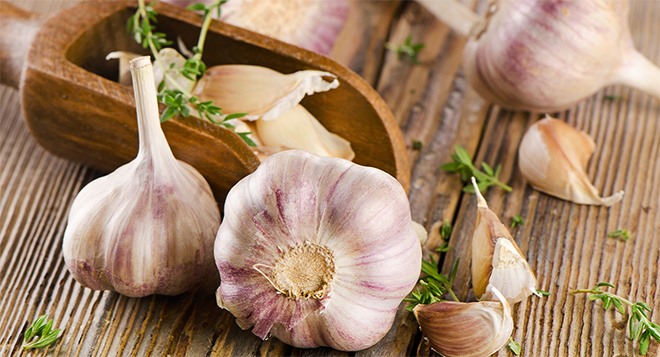

It’s Good To Eat Garlic And Spices While Breastfeeding
Once upon a time, women were told to avoid spicy foods while breastfeeding because they may upset the baby. It turns out the exact opposite is true.
25 years ago researchers conducted a study where they asked breastfeeding women to load up on garlic. Naturally, the women who ate a lot of garlic produced breast milk that had a strong smell, as evaluated by people who didn’t know whose breast milk they were sniffing. Interestingly, the babies preferred the garlic-flavored milk. They stayed on the breast longer and fed more vigorously!
Both breast milk and amniotic fluid inside the womb absorb flavor molecules from the mother’s bloodstream; therefore, take on the flavors of foods she has eaten. A study published in 2001 showed that babies who were exposed to a flavor in utero or during nursing were more likely to enjoy that flavor when they were weaned, thus potentially making them easier to feed.
According to Lucy Cooke, a psychologist specializing in children’s nutrition and a senior research associate at the University College London, “Breast-fed babies are generally easier to feed later because they’ve had this kind of varied experience of different flavors from their very first stages of life, whereas a formula-fed baby has a uniform experience. The absolute key thing is repeated exposure to a variety of different flavors as soon as you can possibly manage; that is a great thing for food acceptance. Babies are tremendously adaptable and very accepting of all sorts of strange flavors.”
Once a child is weaned, eating a wide variety of foods greatly reduces the risk of nutrient deficiencies, not to mention reducing the stress placed on parents when feeding their child. So if you want your child to eat their vegetables and be accepting of new foods, make sure you’re eating them yourself while pregnant and breastfeeding.
Know someone who might benefit from this article? Share it!
Need Help?
1-888-75-LIVER
Monday to Friday, 9:00 am to 5:00 pm MST
100%
Satisfaction Guaranteed
If it’s faulty or wrongly described, we’ll replace it.










